CBS News
2023 National Recording Registry additions: John Lennon, Led Zeppelin, Madonna and “Super Mario Bros.”

Led Zeppelin’s “Stairway to Heaven,” John Lennon’s “Imagine,” the Madonna album “Like a Virgin,” and the theme music from the Nintendo video game “Super Mario Bros.” all now share a unique distinction: they are some of the latest recordings being added to the Library of Congress’ National Recording Registry, to be preserved for future generations.
On Wednesday the Library announced 25 audio recordings — the oldest dating back to 1908 — that are being inducted to the Registry, a compendium of sound recordings deemed representative of America’s artistic, cultural and historic treasures.
Also selected this year: “Déjà Vu,” one of the rock era’s greatest albums, by the supergroup Crosby, Stills, Nash & Young; John Denver’s nostalgic ballad, “Take Me Home, Country Roads”; Mariah Carey’s holiday hit, “All I Want for Christmas Is You”; the fifth studio album by The Police, “Synchronicity”; “Sweet Dreams (Are Made of This)” by Eurythmics; and one of Louis Armstrong’s earliest recordings, “Sugar Foot Stomp.”
Also: “Sherry,” the first #1 hit by The Four Seasons; Jackie DeShannon’s recording of the Burt Bacharach-Hal David song “What the World Needs Now Is Love”; Bobbie Gentry’s haunting “Ode to Billie Joe”; Jimmy Buffett’s infectious ode to breakups, “Margaritaville”; jazz great Wynton Marsalis’ Grammy-winning “Black Codes (From the Underground)”; and Irene Cara‘s Oscar-winning theme to the movie “Flashdance.”
Recordings in the Registry encompass all genres, from pop, rock, jazz, blues, country, classical and rap, to spoken word, radio broadcasts and podcasts, each vital to our nation’s audio legacy.
“The National Recording Registry preserves our history through recorded sound and reflects our nation’s diverse culture,” said Librarian of Congress Carla Hayden. “The national library is proud to help ensure these recordings are preserved for generations to come.”
The recordings added this year bring the number of titles on the registry to 625, a small portion of the Library of Congress’ vast recorded sound collection, encompassing nearly four million items.
According to the library, more than 1,100 recordings were nominated by the public for the Registry this year.
Read about this year’s 25 additions to the Library of Congress’ National Recording Registry and listen to audio samples below — and find out how you can nominate titles to be added to the Registry.
2023 National Recording Registry Additions
“All Hail the Queen” (album) by Queen Latifah (1989)
Tommy Boy
The rapper and singer born in Newark, N.J., had her first single out at age 17. At 18 she signed the contract for her debut album, “All Hail the Queen.” The record, which fused rap, reggae and jazz, featured the hit singles “Ladies First,” “Dance For Me,” “Come Into My House” and “Mama Gave Birth to the Soul Children.”
Though not the first female rapper, Latifah was a trailblazer, also becoming an Oscar-nominated actress (for “Chicago”) and TV star, as well as a Grammy-winner.
PLAY AN EXCERPT: “Ladies First” (with Monie Love), from “All Hail the Queen”
“All I Want for Christmas Is You” by Mariah Carey (1994)
Columbia Records
First released in October 1994, this new holiday standard has continually revisited charts at Christmastime, becoming the most downloaded song of Mariah Carey’s career, and the best-selling holiday song ever recorded by a female artist.
She and co-writer Walter Afanasieff (a.k.a. Baby Love) were longtime collaborators, having worked on “Can’t Let Go,” “Hero,” and “Anytime You Need a Friend.” They concocted “All I Want for Christmas Is You” quickly, improvising the music, and creating lyrics that became as synonymous with the holiday as Irving Berlin’s “White Christmas”:
I don’t want a lot for Christmas
There is just one thing I need
And I don’t care about the presents
Underneath the Christmas tree.
I don’t need to hang my stocking
There upon the fireplace.
Santa Claus won’t make me happy
With a toy on Christmas Day.
I just want you for my own
More than you could ever know.
Make my wish come true.
All I want for Christmas is you
You, baby.
In 2016 when “Sunday Morning” asked Afanasieff why he thinks the song has endured, he said, “Because it didn’t fall into any genre except for a very, very tried-and-true rock ‘n’ roll genre. That no matter what year it is, it’s always that sentimental, yesteryear feeling. It’s timeless, that’s what it is.”
PLAY AN EXCERPT: “All I Want for Christmas Is You”
“Black Codes (From the Underground)” (album) by Wynton Marsalis (1985)
Columbia Records
The co-founder of Jazz at Lincoln Center, and the first artist to win Grammys for both classical and jazz, trumpeter Wynton Marsalis, himself the son of a jazz legend, has been mastering the art form since his youth in New Orleans. “I like pressure. I like that. I like the challenge. I don’t have a problem with it at all. I like the feeling of nervousness. I like the feeling that something counts. And I like to be tested,” he told “60 Minutes” in 2011. “Man, when you’re playing, and you’re playing with other people, it’s such a combination of emotion, it’s so intense. And when you make a tender statement or something’s real sweet and you just caress a note that takes more intensity, it’s powerful.”
One of his most successful recordings, and a winner of two Grammy Awards, “Black Codes (From the Underground)” harks back to the acoustic jazz of the 1950s and ’60s, but with a post-bop feel. Marsalis (who was only 23 at the time) is joined by drummer Jeff “Tain” Watts, Charnett Moffett and Ron Carter (a Miles Davis Quintet alumnus) on bass, pianist Kenny Kirkland, and Wynton’s brother, Branford Marsalis, on saxophone.
PLAY AN EXCERPT: “Black Codes (From the Underground)”
“Concerto for Clarinet and Chamber Orchestra” by Ellen Taaffe Zwilich (2012)
Delos
Composer Ellen Taaffe Zwilich, who won a Pulitzer Prize for her 1982 “Symphony No. 1,” had written the first movement of her clarinet concerto before the first plane struck the North Tower of the World Trade Center on September 11, 2001. Consequently, the energy of the piece’s opening is replaced in the succeeding movements by sorrow, anger and, in the words of New York magazine, “cautious optimism.”
This live recording of the Northwest Chamber Orchestra, conducted by Ransom Wilson and featuring clarinetist David Shifrin, was made in Portland, Oregon, in 2004 during the piece’s West Coast premiere.
PLAY AN EXCERPT: “Concerto for Clarinet and Chamber Orchestra”
“Déjà Vu” (album), by Crosby, Stills, Nash & Young (1970)
Atlantic Records
In 1969 David Crosby, Steven Stills and Graham Nash had formed a supergroup, with impeccable timing — their second gig was a little show called Woodstock — and their first album, “Crosby, Stills & Nash,” rose to #6 on the Billboard chart. By the time they recorded their second album, “Déjà Vu,” they had expanded to include Stills’ former bandmate from Buffalo Springfield, Neil Young.
But the album came at a particularly fraught time. Stills had just broken up with Judy Collins; Nash’s relationship with Joni Mitchell was growing rocky; and Crosby’s girlfriend, Christine Hinton, had been killed in a car crash. “I was in terrible shape,” Crosby told “Sunday Morning” in 2021. “I was damn near destroyed. I’m just really lucky we were making that record, because it gave me a raison d’être. … It’s what kept me alive.”
In addition to the opening track, “Carry On,” the album included “Woodstock,” “Teach Your Children,” “Our House,” “Helpless,” “4 + 20,” “Country Girl,” and “Everybody I Love You.” “There’s masterpieces in there,” said Stills. “Ain’t a dog in the bunch!”
And while the band did not endure, their album has, selling more than eight million copies. It is considered one of the greatest albums of the rock era.
PLAY AN EXCERPT: “Carry On,” from “Déjà Vu”
“Don’t Let Nobody Turn You Around” by The Fairfield Four (1947)
Country Music Hall of Fame
With its origins in the 1920s as an a capella gospel trio, the Fairfield Four, formed at the Fairfield Baptist Church in Nashville, would become fixtures on radio and on recordings, showcasing the jubilee style of gospel. With changing membership, The Fairfield Four would continue, on and off, for one hundred years, even winning Grammys in 1997 and 2015 (and sharing an Album of the Year Grammy in 2002 for their participation in the soundtrack of “O Brother, Where Art Thou?”).
At their second recording session for the Bullet label in 1947, the quartet recorded “Don’t Let Nobody Turn You Around” (which would become their signature song), led by tenor The Rev. Sam McCrary.
PLAY AN EXCERPT: “Don’t Let Nobody Turn You Around”
Dorothy Thompson: Commentary and Analysis of the European Situation for NBC Radio (Aug. 23-Sept. 6, 1939)
Library of Congress
In the 1920s and ’30s print journalist, columnist and broadcaster Dorothy Thompson covered politics and culture in Europe.
In late August 1939, Thompson made daily broadcasts on NBC analyzing Hitler’s launch of war.
PLAY AN EXCERPT: Dorothy Thompson broadcast
“Flashdance…What a Feeling” by Irene Cara (1983)
Casablanca/Polygram
Take your passion
And make it happen
Pictures come alive
You can dance right through your life
What a feeling
For the 1983 film “Flashdance,” about a young dancer played by Jennifer Beals who dreams of making it in ballet in spite of her blue-collar street cred, Irene Cara (who had a Top 10 hit with the theme from “Fame”) co-wrote and performed the title track, “Flashdance … What A Feeling,” which would sit on top of the Billboard charts for six weeks. She would share the Academy Award and the Golden Globe for best original song with Giorgio Moroder and Keith Forsey. They also shared a Grammy for the film’s soundtrack album.
PLAY AN EXCERPT: “Flashdance … What a Feeling”
“Gasolina” by Daddy Yankee (2004)
VI Music/UMG
Reggaeton, a genre of music inspired by hip hop, spread across Spanish-speaking Caribbean and Latin America through underground recordings and bootlegs.
Puerto Rican rapper Daddy Yankee came up with the term reggaeton, and his 2004 song “Gasolina,” featured on his album “Barrio Fino,” was the first reggaeton track to be nominated for a Latin Grammy Award for Record of the Year.
PLAY AN EXCERPT: “Gasolina”
“Imagine” by John Lennon (1971)
Apple
Imagine there’s no heaven
It’s easy if you try
No hell below us
Above us, only sky
The former Beatle’s bestselling solo single, “Imagine” has moved beyond the realm of pop music and taken on the mantle of secular hymn — a cry for worldwide peace, performed as a tribute during times of mourning, and as an aspiration in times of celebration. It has been covered by hundreds of artists, in performances beamed across the globe.
Its thought-provoking lyrics would stir controversy (particularly its suggestion that competing religions stood in the way of peace), but it was hard to argue with Lennon’s very humanistic cry for empathy and love without borders or boundaries.
The song was produced by Lennon, Yoko Ono (she would later share songwriting credit) and Phil Spector. In 2004 Rolling Stone magazine listed “Imagine” at #3 on its roster of “500 Greatest Songs of All Time.”
PLAY AN EXCERPT: “Imagine”
“Like a Virgin” (album) by Madonna (1984)
Sire/Warner Brothers
Madonna Ciccone, who was only 5 years old when she lost her mother to breast cancer, said the trauma of that loss fueled her rebellious nature and her famous desire to push the envelope. “When I was younger I just used to say things, do crazy things,” she told “Sunday Morning” in 2017. “Just to be a punk. Just to irritate people.”
Why? “I don’t know, ’cause that’s part of growing up, isn’t it?”
She grew up to become a pop music phenomenon, whose punkish couture, rebellious and racy image, engaging voice and catchy tunes merged into an iconic artist who would sell more than 200 million records. Her first, eponymous album, in 1983, put her on the map. But her second collection, “Like a Virgin,” peaked at #1 on the Billboard chart — her first of nine albums to do so.
Produced by Madonna and Nile Rodgers, the album features “Material Girl,” “Angel,” “Over and Over,” “Love Don’t Live Here Anymore,” “Dress You Up,” “Shoo-Bee-Doo,” “Pretender,” “Stay,” and the title track.
PLAY AN EXCERPT: “Like a Virgin”
“Margaritaville” by Jimmy Buffett (1977)
UMG
Raised in Alabama, Jimmy Buffett tried to break into the music business in Nashville, but it was in New Orleans in the early 1970s, he says, that was his training ground, playing for tourists in the clubs and on the streets. He eventually moved to Key West, Florida, refining his country-meets-Caribbean sound, and his career took off.
With his third album, 1977’s “Changes in Latitudes, Changes in Attitudes,” he scored his breakthrough Top 10 hit, “Margaritaville,” which became Buffett’s signature tune – a Florida Keys-drenched ode to the kind of heartache that can only be salved with a potent beverage (and a gradual self-realization of blame).
PLAY AN EXCERPT: “Margaritaville”
“Ode to Billie Joe” by Bobbie Gentry (1967)
Library of Congress
Seems like nothin’ ever comes to no good up on Choctaw Ridge
And now Billy Joe MacAllister’s jumped off the Tallahatchie Bridge
Singer-songwriter Bobbie Gentry’s ode to a young man’s death, and the seeming indifference to tragedy, was most vividly conveyed in her lyrics about a young woman learning the news of a friend’s suicide. Gentry was only 25 when she wrote and recorded the song, which is arresting in its sparse sound and Southern Gothic language, hinting at the mystery of the girl’s connection to the young man.
And what exactly did the two of them throw off the Tallahatchie Bridge the day before his death? Gentry says she knows but will not say. A 1976 film, starring Robby Benson and Glynnis O’Connor, offered one answer. But the song, and its inherent mystery, survives that film.
PLAY AN EXCERPT: “Ode to Billie Joe”
“Pale Blue Dot” (audiobook) by Carl Sagan (1994)
Brilliance Audio
In 1990, as Voyager 1 was reaching the edge of the solar system, Carl Sagan asked NASA to have a photo taken of Earth from a distance of about four billion miles. The resulting mosaic of images used to create a family portrait of our solar system, with a tiny dot representing Earth — all of humanity, and the only known life in the universe — resulted in Sagan’s 1994 book, “Pale Blue Dot: A Vision of the Human Future in Space.”
In the audiobook recording, Sagan speaks of the responsibility that all Mankind has to preserve the only world sustaining life as we know it — a tiny speck in the cosmos.
PLAY AN EXCERPT: “Pale Blue Dot”
“St. Louis Blues” by Handy’s Memphis Blues Band (1922)
Carl Van Vechten/Library of Congress
Songwriter, band leader and musicologist W.C. Handy (1873-1958) was called the “Father of the Blues,” helping to spread the popularity of the blues across racial lines.
His “St. Louis Blues” was one of the first blues compositions to enjoy success as a pop song.
It would later be covered by such artists as Bessie Smith, Bing Crosby, Glenn Miller, Count Basie and Benny Goodman.
PLAY AN EXCERPT: “St. Louis Blues”
“Sherry” by The Four Seasons (1962)
Rhino Records
One of the most popular groups of the 1960s and early ’70s, The Four Seasons (Frankie Valli, Tommy DeVito, Bob Gaudio and Nick Massi) had five #1 hit songs, their first being “Sherry.”
Written by Gaudio (initially as a tribute to first lady Jacqueline Kennedy), “Sherry” would be a familiar song on film and TV soundtracks, and of course was featured prominently in the musical and film “Jersey Boys,” which told the story of the Four Seasons.
PLAY AN EXCERPT: “Sherry”
“Stairway to Heaven” by Led Zeppelin (1971)
Atlantic Records
Led Zeppelin sold more than 300 million records and remains, today, one of rock’s greatest groups. Guitarist and producer Jimmy Page, bassist John Paul Jones, drummer John Bonham and singer Robert Plant produced some of the era’s most memorable music, but their “Stairway to Heaven” — featured on their untitled 1971 album, usually referred to as “Led Zeppelin IV” — was masterful. Starting with a plaintive acoustic guitar and recorder, the music begins a slow, 7:55 build to one of the most invigorating guitar solos and demonstrations of percussive power ever recorded.
Though the song wasn’t officially released as a single (how many eight-minute-long 45 rpms have you seen?), the album went platinum 24x in the U.S. alone, and the song’s popularity made it a mainstay of FM radio and near the top of various “greatest rock songs” lists. More than three decades after its release, “Stairway to Heaven” would hit the charts on its own once sales of digital downloads began being tracked.
PLAY AN EXCERPT: “Stairway to Heaven”
MCA/UMG
“Sugar Foot Stomp” by Fletcher Henderson (1926)
Fletcher Henderson (1897-1952) was one of the most successful African American bandleaders in the early 20th century, playing in establishments like New York’s Roseland Ballroom. But his reputation was boosted once he hired cornetist Louis Armstrong.
In this recording of “Sugar Foot Stomp” (arranged by Don Redman), with Henderson on piano, Armstrong lands a 36-bar solo (based on Joe Oliver’s “Dipper Mouth Blues”). Also featured are Charlie “Big” Green (trombone), Elmer Chambers and Joe Smith (trumpets), Buster Bailey and Don Redman (clarinet & alto sax), Coleman Hawkins (tenor sax & clarinet), Charlie Dixon (banjo), Ralph Escudero (tuba), and Kaiser Marshall (drums).
PLAY AN EXCERPT: “Sugar Foot Stomp”
Super Mario Bros. theme by Koji Kondo (1986)
Nintendo
Inspired in part by the music of the Japanese jazz fusion band T-Square, Koji Kondo concocted the jaunty accompaniment for the classic Nintendo video game. Its Latin flavor would help it become one of the most recognizable musical themes of the era.
The music, which has inspired a generation of video game composers, leaped from its game origins to become one of the most popular downloadable ringtones, and has been performed by symphony orchestras.
PLAY AN EXCERPT: Super Mario Bros. theme
“Sweet Dreams (Are Made of This)” by Eurythmics (1983)
RCA Records
Scottish singer Annie Lennox, who showed an artistic bent at an early age, dropped out of a London music academy when she found it too restrictive. She drifted around until 1980 when she teamed up with another struggling musician, Dave Stewart, and something clicked. “We found something that was a particular sound, a particular style, and that was really thrilling in a way,” she told “Sunday Morning” in 2007. “Because I think that is the journey as a creative artist, to find something authentic and identifiable.”
First collaborating as part of the rock band The Tourists, Lennox and Stewart would become the pioneering new wave duo Eurythmics, who pushed the envelope of electronic rock and the developing medium of music videos. With their 1983 release “Sweet Dreams,” which hit #1 in the U.S. they became worldwide stars.
A synth-pop song with a propulsive drum and synth line, it also had lyrics that, Lennox told The Guardian in 2017, were hopeless and nihilistic. “From that first line, it’s not a happy song. It’s dark. ‘Sweet dreams are made of this’ is basically me saying: ‘Look at the state of us. How can it get worse?’ … ‘I travelled the world and the seven seas, everybody’s looking for something’ was about how we’re all in this perpetual state of seeking. It’s about surviving the world. It’s not a normal song so much as a weird mantra that goes round and round, but somehow it became our theme song.”
PLAY AN EXCERPT: “Sweet Dreams (Are Made of This)”
“Synchronicity” (album) by The Police (1983)
A&M
Gordon Sumner worked as a school teacher by day and moonlighted as a musician by night until one day he packed up and moved to London. He told “Sunday Morning” in 2006, “Well, I was in my mid-twenties. I had a job with a pension plan. And the window was beginning to close on my dream. So I thought, ‘Well, I either make this leap now, or this is it for life.'”
Virtually self-taught, he’d mastered the bass guitar while playing in jazz clubs, and along the way picked up a nickname, due to his wearing a black-and-yellow striped sweater. By the late ’70s and early ’80s, Sting, guitarist Andy Summers, and drummer Stewart Copeland, known as The Police, were the biggest rock band in the world, with three #1 albums before the release of their fifth and final studio collaboration, “Synchronicity.”
It, too, went to #1, and birthed the hits “Every Breath You Take,” “Wrapped Around Your Finger,” and “King of Pain.”
The album won three Grammy Awards.
PLAY AN EXCERPT: “Every Breath You Take,” from “Synchronicity”
“Take Me Home, Country Roads” by John Denver (1971)
RCA Records
Almost Heaven, West Virginia
Blue Ridge Mountains, Shenandoah River
Life is old there, older than the trees
Younger than the mountains, growing like a breeze
Country roads, take me home
To the place I belong
West Virginia, mountain mama
Take me home, country roads
One of the co-writers of one of John Denver’s most recognizable ballads had never even been in West Virginia, when he and his partner, Taffy Nivert, played an early draft of the song for their friend. Danoff told “Sunday Morning” in 2021 that the song evoked nostalgia, no matter where home was: “When it came out in ’71, you know, the Vietnam War was really rockin’. And we had, oh, hundreds of thousands of troops over there. So, coming home was a big, big deal.”
The three of them completed the song, which became Denver’s first big hit. And despite some questionable geography (the Blue Ridge Mountains and Shenandoah River in the lyrics are barely within the state’s borders), West Virginians embraced it in a big way. But the song has held enduring appeal outside of the state and across the globe, its message appropriated to wherever home is.
PLAY AN EXCERPT: “Take Me Home, Country Roads”
“The Very First Mariachi Recordings 1908-1909” (album) by Cuarteto Coculense
Arhoolie Records
In 1998 Arhoolie Records collected and released the very first recordings of mariachi music that had been made by musicians from Cocula, Jalisco, known as the Cuarteto Coculense.
The Columbia, Edison and Victor companies, which had set up facilities in Mexico City, made the recordings on wax cylinders and 78 rpm discs, capturing the power and vitality of the performances by the fiddlers and guitarists.
The Mexican Revolution in 1910 would shutter the recording studios, putting a pause on further recordings, until radio broadcasting could expand the audience for this genre.
PLAY AN EXCERPT: Cuarteto Coculense mariachi recording
“Wang Dang Doodle” by Koko Taylor (1966)
Alligator Records
In 1966 Koko Taylor, one of the great voices of Chicago Blues, teamed up with bassist and producer Willie Dixon to record Dixon’s 1960 song “Wang Dang Doodle,” which had previously been performed by Howlin’ Wolf.
Taylor’s version reached #4 on the R&B chart, and would later be inducted in the Blues Foundation Hall of Fame.
PLAY AN EXCERPT: “Wang Dang Doodle”
“What the World Needs Now Is Love” by Jackie DeShannon (1965)
Imperial Records
Burt Bacharach and Hal David composed some of the ’60s and ’70s most memorable pop tunes for some of the biggest stars, from Dusty Springfield, Tom Jones and the Carpenters to their frequent collaborator, Dionne Warwick. But Warwick initially turned down their song “What the World Needs Now Is Love,” which was written in the tempo of a waltz. Instead, singer/songwriter Jackie DeShannon, who’d previously released three albums (including 1964’s “Breakin’ It Up on the Beatles Tour”) recorded the tune as the opening track of her 1965 album, “This Is Jackie DeShannon.”
The recording became a Top 10 hit, and earned DeShannon a Grammy for best female vocal performance. The song would be later covered by such artists as The Sweet Inspirations, The Staple Singers, Mahalia Jackson, Barbra Streisand, Barry Manilow, Wynonna Judd, Stan Getz, Jack Jones, Ferrante & Teicher, DJ Tom Clay, and Warwick herself.
PLAY AN EXCERPT: “What the World Needs Now Is Love”
For more info:
You can also sample previous years’ additions here:
CBS News
2 killed in U.S. Civil Air Patrol plane crash near Palisade Mountain in Northern Colorado

Two people were killed and a third was injured when a U.S. Civil Air Patrol plane crashed in Colorado’s Front Range Saturday morning.
The small passenger plane with three people aboard crashed near Storm Mountain and Palisade Mountain west of Loveland around 11:15 a.m., according to the Larimer County Sheriff’s Office. The plane belonged to the Civil Air Patrol, the civilian auxiliary wing of the U.S. Air Force, and was on a routine aerial photography training mission when it went down, officials said.
Pilot Susan Wolber and aerial photographer Jay Rhoten were identified by CAP as those killed and co-pilot Randall Settergren was identified as the person injured. Settergren was airlifted to an area hospital by a National Guard helicopter, where he is undergoing medical care.
CBS
“The volunteers of Civil Air Patrol are a valuable part of the Department of Military and Veterans Affairs, and the lifesaving work they do on a daily basis directly contributes to the public safety of Coloradans throughout the state,” Maj. Gen. Laura Clellan, adjutant general of the Colorado Department of Military and Veterans Affairs, said in a statement Saturday.
“We are devastated to hear of the loss of Susan Wolber and Jay Rhoten, and the injury of Randall Settergren, during a training mission in Larimer County. Our thoughts and deepest condolences are with the families of those involved in the crash,” Clellan continued. “I would also like to thank all of the first responders who assisted with rescue efforts.”
Palisade Mountain is in Larimer County, about 20 miles west of Loveland and about 65 miles northwest of Denver. The area is part of the burn scar of the Alexander Mountain Fire, which burned almost 10,000 acres in over two weeks this past summer.
The crash happened about 200 feet below the summit of Palisade Mountain in an area that includes tall trees and steep hills as part of the mountain range. Rescue crews were heard on radio traffic working to find a landing zone for rescue helicopters. No structures were impacted by the crash.
The plane crashed in “very rugged” and “extensive and rocky terrain,” Ali Adams, a Larimer County Sheriff’s Office spokeswoman, said at a news conference. First responders had to hike out to the site and the sole survivor was “severely injured” when responders finally got to them.
Rescue efforts were ongoing at 3:15 p.m., according to Adams, and recovery efforts for the two deceased people’s bodies could take several days.
Several agencies responded, including the Loveland Fire Rescue Authority, Thompson Valley EMS and the National Guard.
The Larimer County Sheriff’s Office is the lead agency investigating the crash and the Federal Aviation Administration and National Transportation Safety Board will assist, according to Adams. The NTSB said it too was investigating the crash and identified the plane as a Cessna 182.
“This is one of those incidents that is really low frequency; it doesn’t happen really often, but unfortunately, our first responders have had more than their fair share of responses,” Adams said.
George Solheim lives in the area of the crash. He described conditions as “extremely windy” on Saturday and heard the plane just prior to the crash. He says he could hear “loud ‘throttle up/down’ immediately prior to sudden silence at (the) time of (the) crash. Couldn’t hear sounds of impact from here.”
Colorado Gov. Jared Polis extended his sympathy to the families of the victims in a statement Saturday evening:
“I’m saddened to hear of the loss of two dedicated Civil Air Patrol members, Pilot Susan Wolber and aerial photographer Jay Rhoten, who lost their lives in today’s crash and my thoughts are with their families, friends and colleagues. These individuals, along with survivor co-pilot Randall Settergren, who was injured, served the Civil Air Patrol as volunteers who wanted to help make Colorado a better, safer place for all. The State of Colorado is grateful for their commitment to service and it will not be forgotten. I also want to thank the first responders who assisted with the rescue and recovery efforts.”
CBS News
Fred Harris, former Democratic U.S. senator and presidential candidate, dies at 94

Fred Harris, a former U.S. senator from Oklahoma, presidential hopeful and populist who championed Democratic Party reforms in the turbulent 1960s, died Saturday. He was 94.
Harris’ wife, Margaret Elliston, confirmed his death to The Associated Press. He had lived in New Mexico since 1976.
“Fred Harris passed peacefully early this morning of natural causes. He was 94. He was a wonderful and beloved man. His memory is a blessing,” Elliston said in a text message.
Bettmann Archive/Getty Images
Harris served eight years in the Senate, first winning in 1964 to fill a vacancy, and made unsuccessful bid for the presidency in 1976.
“I am deeply saddened to learn of the passing of my longtime friend Fred Harris today,” Democratic New Mexico Gov. Michelle Lujan Grisham wrote in a post to social media. “Harris was a towering presence in politics and in academia, and his work over many decades improved New Mexico and the nation. He will be greatly missed.”
Democratic Sen. Martin Heinrich of New Mexico said in a statement that “New Mexico and our nation have lost a giant,” describing him as a “tireless champion of civil rights, tribal sovereignty and working families.”
It fell to Harris, as chairman of the Democratic National Committee in 1969 and 1970, to help heal the party’s wounds from the tumultuous national convention in 1968 when protesters and police clashed in Chicago.
He ushered in rule changes that led to more women and minorities as convention delegates and in leadership positions.
“I think it’s worked wonderfully,” Harris recalled in 2004, when he was a delegate to the Democratic National Convention in Boston. “It’s made the selection much more legitimate and democratic.”
“The Democratic Party was not democratic, and many of the delegations were pretty much boss-controlled or -dominated. And in the South, there was terrible discrimination against African Americans,” he said.
Harris ran unsuccessfully for the Democratic presidential nomination in 1976, quitting after poor showings in early contests, including a fourth-place win in New Hampshire. The more moderate Jimmy Carter went on to win the presidency.
Harris moved to New Mexico that year and became a political science professor at the University of New Mexico. He wrote and edited more than a dozen books, mostly on politics and Congress. In 1999 he broadened his writings with a mystery set in Depression-era Oklahoma.
Throughout his political career, Harris was a leading liberal voice for civil rights and anti-poverty programs to help minorities and the disadvantaged. Along with his first wife, LaDonna, a Comanche, he also was active in Native American issues.
“I’ve always called myself a populist or progressive,” Harris said in a 1998 interview. “I’m against concentrated power. I don’t like the power of money in politics. I think we ought to have programs for the middle class and working class.”
“Today ‘populism’ is often a dirty word because of how certain leaders wield power,” Heinrich said in his statement Saturday. “But Fred represented a different brand of populism — one that was never mean or exclusionary. Instead, Fred focused his work and attention on regular people who are often overlooked by the political class.”
Harris was a member of the National Advisory Commission on Civil Disorders, the so-called Kerner Commission, appointed by then-President Lyndon Johnson to investigate the urban riots of the late 1960s.
The commission’s groundbreaking report in 1968 declared, “our nation is moving toward two societies, one black, one white — separate and unequal.”
Thirty years later, Harris co-wrote a report that concluded the commission’s “prophecy has come to pass.”
“The rich are getting richer, the poor are getting poorer and minorities are suffering disproportionately,” said the report by Harris and Lynn A. Curtis, president of the Milton S. Eisenhower Foundation, which continued the work of the commission.
Norman Ornstein of the American Enterprise Institute said Harris rose to prominence in Congress as a “fiery populist.”
“That resonates with people…the notion of the average person against the elite,” Ornstein said. “Fred Harris had a real ability to articulate those concerns, particularly of the downtrodden.”
In 1968, Harris served as co-chairman of the presidential campaign of then-Vice President Hubert Humphrey. He and others pressed Humphrey to use the convention to break with Johnson on the Vietnam War. But Humphrey waited to do so until late in the campaign, and narrowly lost to Republican Richard Nixon.
“That was the worst year of my life, ’68. We had Dr. Martin Luther King killed. We had my Senate seatmate Robert Kennedy killed and then we had this terrible convention,” Harris said in 1996.
“I left the convention — because of the terrible disorders and the way they had been handled and the failure to adopt a new peace platform — really downhearted.”
After assuming the Democratic Party leadership post, Harris appointed commissions that recommended reforms in the procedures for selecting delegates and presidential nominees. While lauding the greater openness and diversity, he said there had been a side effect: “It’s much to the good. But the one result of it is that conventions today are ratifying conventions. So it’s hard to make them interesting.”
“My own thought is they ought to be shortened to a couple of days. But they are still worth having, I think, as a way to adopt a platform, as a kind of pep rally, as a way to get people together in a kind of coalition-building,” he said.
Harris was born Nov. 13, 1930, in a two-room farmhouse near Walters, in southwestern Oklahoma, about 15 miles from the Texas line. The home had no electricity, indoor toilet or running water.
At age 5 he was working on the farm and received 10 cents a day to drive a horse in circles to supply power for a hay bailer.
He worked part-time as a janitor and printer’s assistant to help for his education at University of Oklahoma. He earned a bachelor’s degree in 1952, majoring in political science and history. He received a law degree from the University of Oklahoma in 1954, and then moved to Lawton to practice.
In 1956, he won election to the Oklahoma state Senate and served for eight years. In 1964, he launched his career in national politics in the race to replace Sen. Robert S. Kerr, who died in January 1963.
Harris won the Democratic nomination in a runoff election against J. Howard Edmondson, who left the governorship to fill Kerr’s vacancy until the next election. In the general election, Harris defeated an Oklahoma sports legend — Charles “Bud” Wilkinson, who had coached OU football for 17 years.
Harris won a six-year term in 1966 but left the Senate in 1972 when there were doubts that he, as a left-leaning Democrat, could win reelection.
Harris married his high school sweetheart, LaDonna Vita Crawford, in 1949, and had three children, Kathryn, Byron and Laura. After the couple divorced, Harris married Margaret Elliston in 1983. A complete list of survivors was not immediately available Saturday.
CBS News
Compromise deal reached at COP29 climate talks for $300 billion a year to poor nations

Countries agreed on a deal to inject at least $300 billion annually in humanity’s fight against climate change, aimed at helping poor nations cope with the ravages of global warming at tense United Nations climate talks in the city where industry first tapped oil.
The $300 billion will go to developing countries who need the cash to wean themselves off the coal, oil and gas that causes the globe to overheat, adapt to future warming and pay for the damage caused by climate change’s extreme weather. It’s not near the full amount of $1.3 trillion that developing countries were asking for, but it’s three times the $100 billion a year deal from 2009 that is expiring. Delegations said this deal is headed in the right direction, with hopes that more money flows in the future.
“Everybody is committed to having an agreement,” Fiji delegation chief Biman Prasad said as the deal was being finalized. “They are not necessarily happy about everything, but the bottom line is everybody wants a good agreement.”
It’s also a critical step toward helping countries on the receiving end create more ambitious targets to limit or cut emissions of heat-trapping gases that are due early next year. It’s part of the plan to keep cutting pollution with new targets every five years, which the world agreed to at the U.N. talks in Paris in 2015.
The Paris agreement set the system of regular ratcheting up climate fighting ambition as away to keep warming under 1.5 degrees Celsius above pre-industrial levels. The world is already at 1.3 degrees Celsius and carbon emissions keep rising.
Countries also anticipate that this deal will send signals that help drive funding from other sources, like multilateral development banks and private sources. That was always part of the discussion at these talks — rich countries didn’t think it was realistic to only rely on public funding sources — but poor countries worried that if the money came in loans instead of grants, it would send them sliding further backward into debt that they already struggle with.
“The $300 billion goal is not enough, but is an important down payment toward a safer, more equitable future,” said World Resources Institute President Ani Dasgupta. “This deal gets us off the starting block. Now the race is on to raise much more climate finance from a range of public and private sources, putting the whole financial system to work behind developing countries’ transitions.”
It’s more than the $250 billion that was on the table in the first draft of the text, which outraged many countries and led to a period of frustration and stalling over the final hours of the summit. After an initial proposal of $250 billion a year was soundly rejected, the Azerbaijan presidency brewed up a new rough draft of $300 billion, that was never formally presented, but also dismissed roundly by African nations and small island states, according to messages relayed from inside.
The several different texts adopted early Sunday morning included a vague but not specific reference to last year’s Global Stocktake approved in Dubai. Last year there was a battle about first-of-its-kind language on getting rid of the oil, coal and natural gas, but instead it called for a transition away from fossil fuels. The latest talks only referred to the Dubai deal, but did not explicitly repeat the call for a transition away from fossil fuels.
Countries also agreed on the adoption of Article 6, creating markets to trade carbon pollution rights, an idea that was set up as part of the 2015 Paris Agreement to help nations work together to reduce climate-causing pollution. Part of that was a system of carbon credits, allowing nations to put planet-warming gasses in the air if they offset emissions elsewhere. Supporters said a U.N.-backed market could generate up to an additional $250 billion a year in climate financial aid.
Despite its approval, carbon markets remain a contentious plan because many experts say the new rules adopted don’t prevent misuse, don’t work and give big polluters an excuse to continue spewing emissions.
“What they’ve done essentially is undermine the mandate to try to reach 1.5,” said Tamara Gilbertson, climate justice program coordinator with the Indigenous Environmental Network. Greenpeace’s An Lambrechts, called it a “climate scam” with many loopholes.
With this deal wrapped up as crews dismantle the temporary venue, many have eyes on next year’s climate talks in Belem, Brazil.


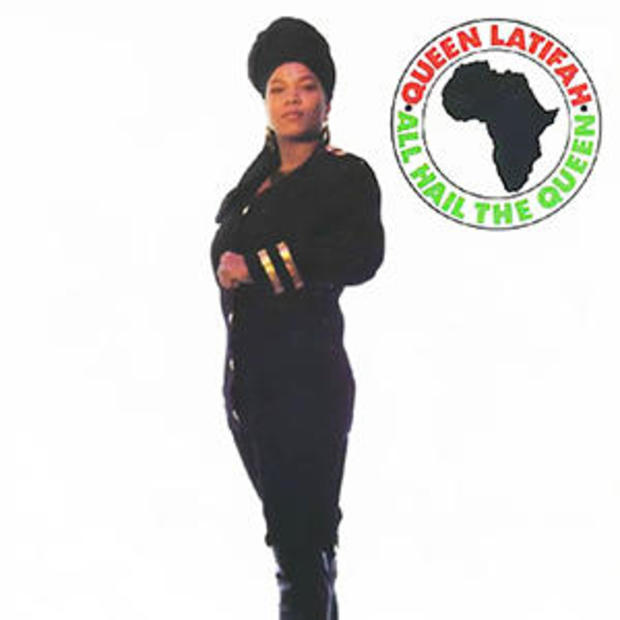

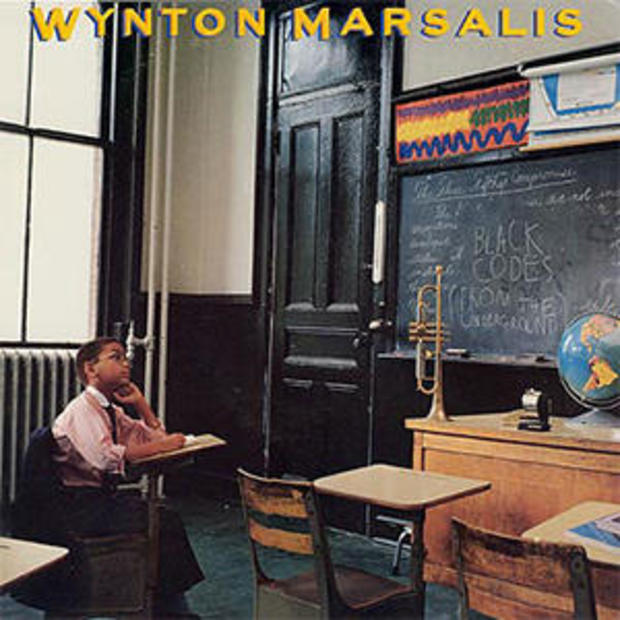

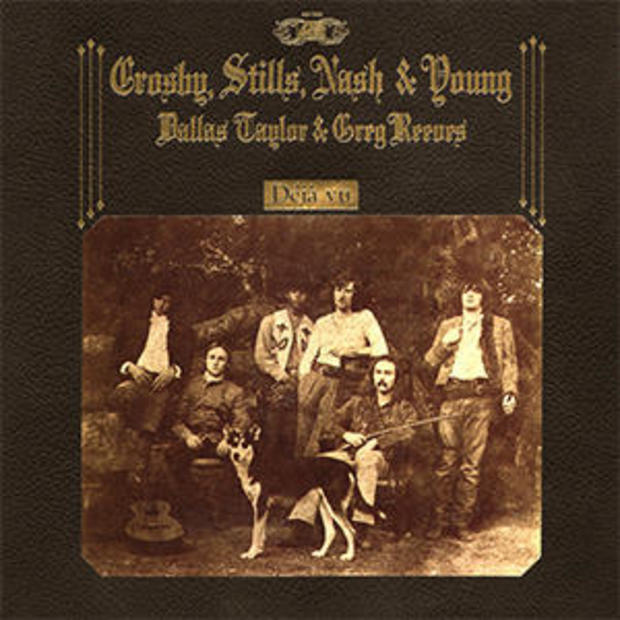


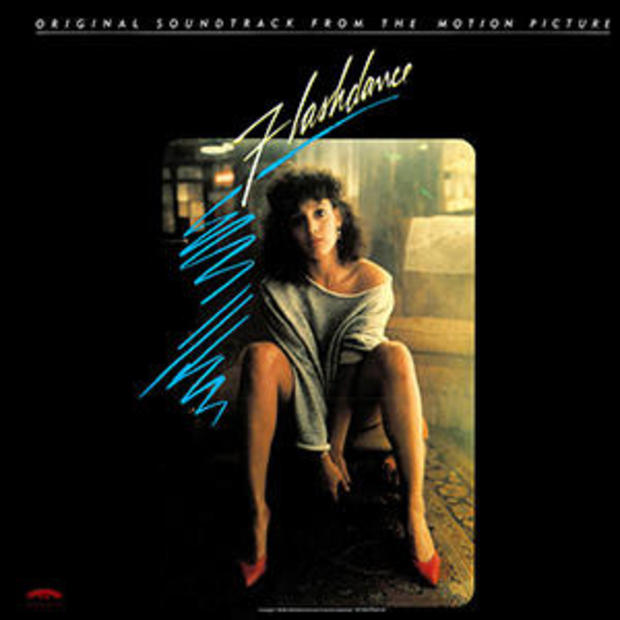



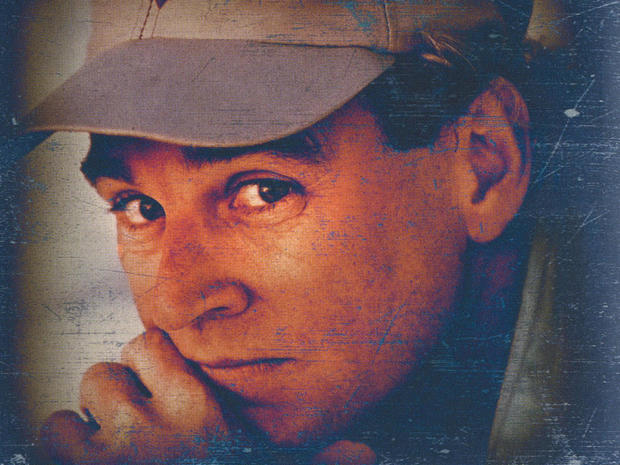
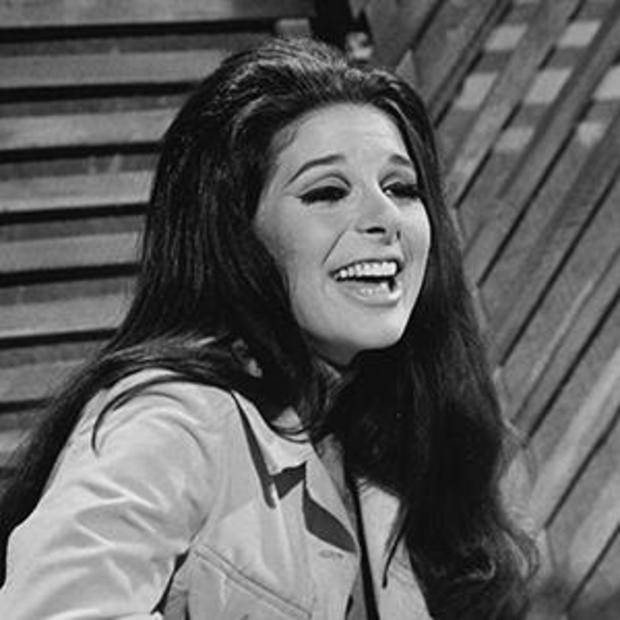






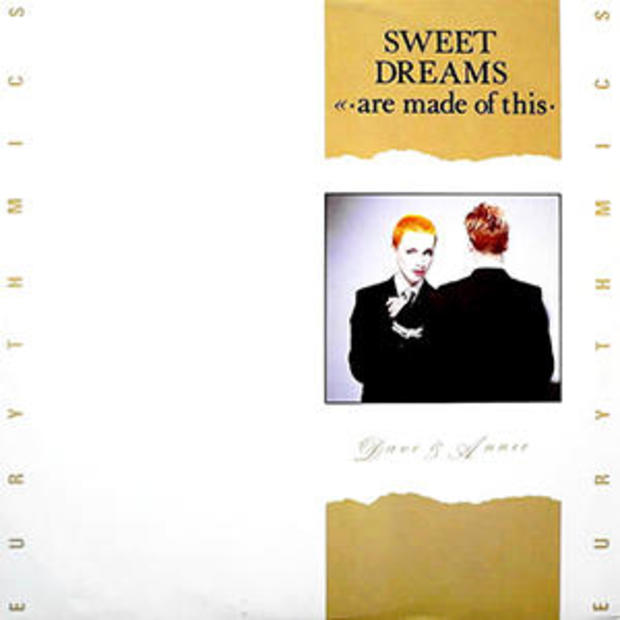
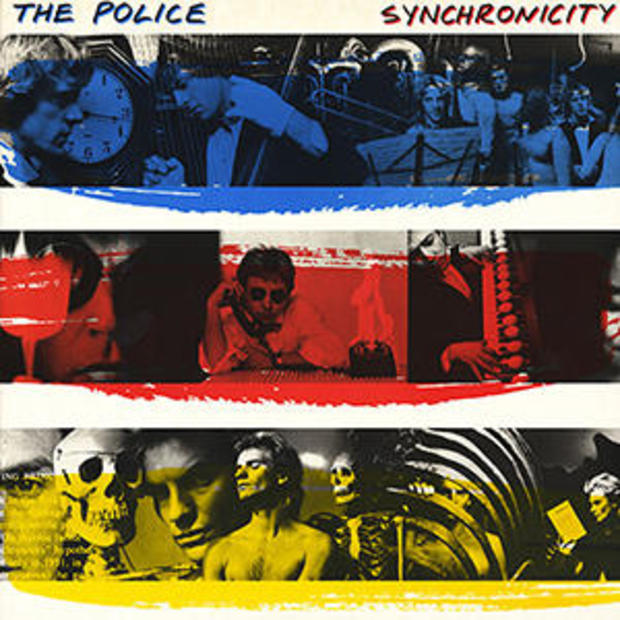
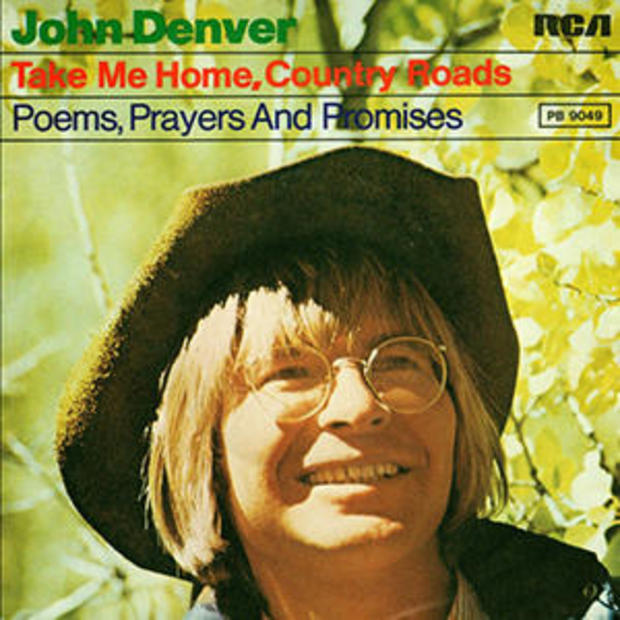

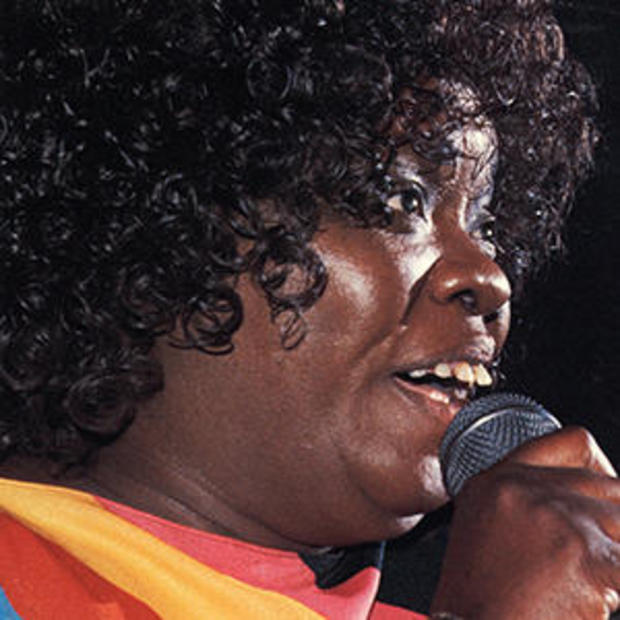


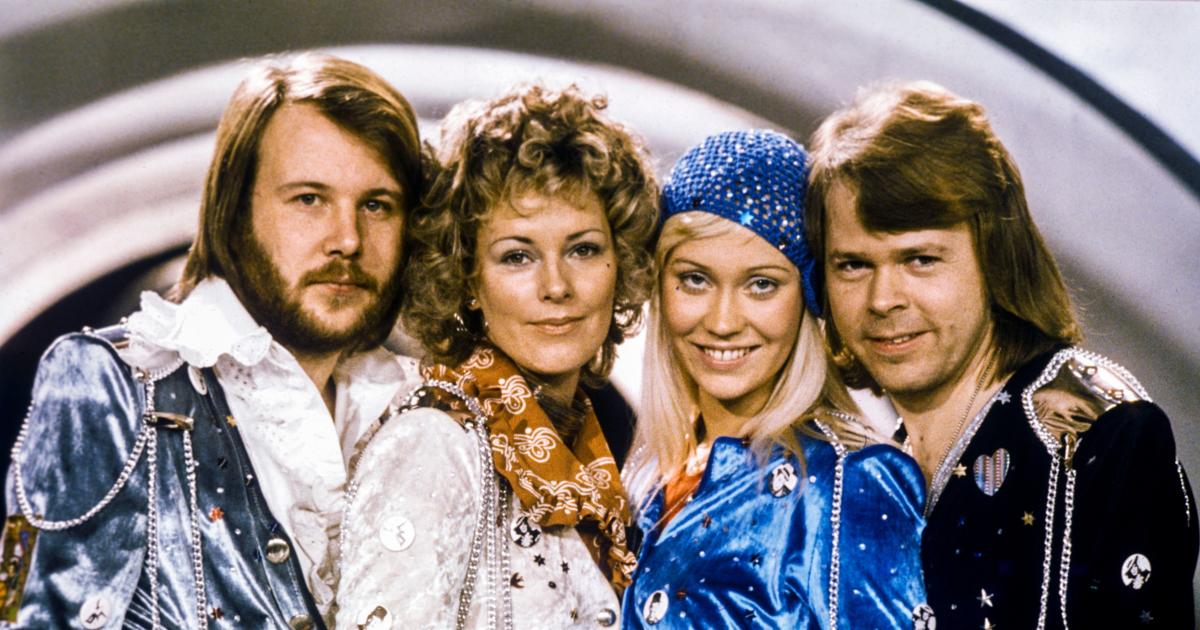
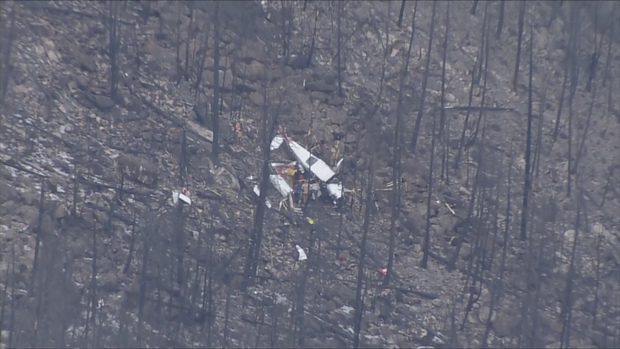
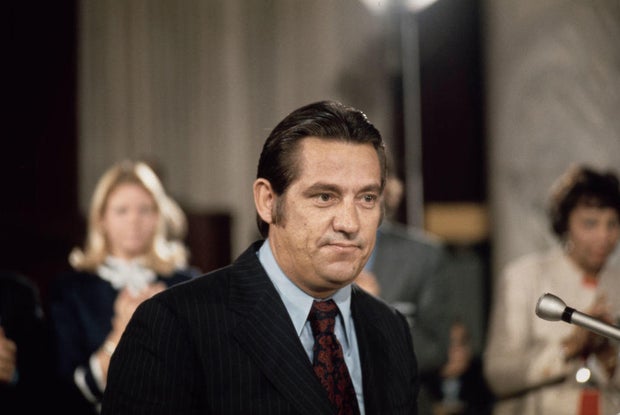
GIPHY App Key not set. Please check settings